Many people started learning Thai scripts but gave up because of a few painful challenges. BUT, no worries. I will help you go through all of them and give you useful tips and techniques in this blog post, just step-by-step.
I will introduce you to 5 main challenges to learning Thai scrip and how to overcome all of them to make it easier for you to start with your first reading Thai lesson.
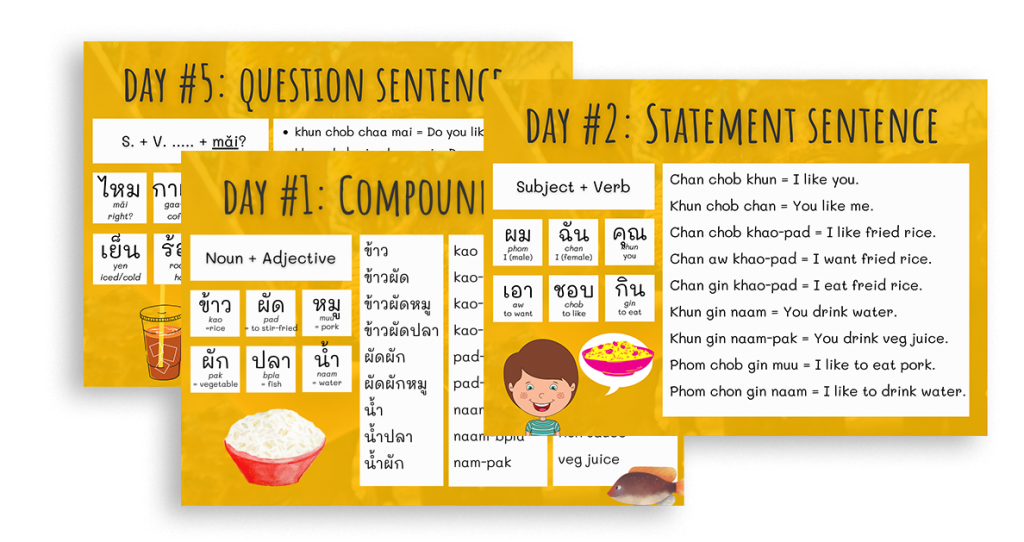
Join 5-day Easy Thai challenge
Get a series of short lessons via email to master basic Thai sentences. Best for beginners.
5 main challenges to learning Thai scripts and how to overcome them
1. A big number of Thai consonants
In English, there are only 21 consonants while in Thai there are 44 consonants.
Fact: The number of Thai consonants might seem a lot but there are a few consonants that are more commonly used.
For example ด (door-dek) is one of the most commonly used consonants, while ฬ (loor chu-laa) is hardly seen.
Tip: Highlight or group the consonants that are more commonly used is a way to save time and energy to memorize them.
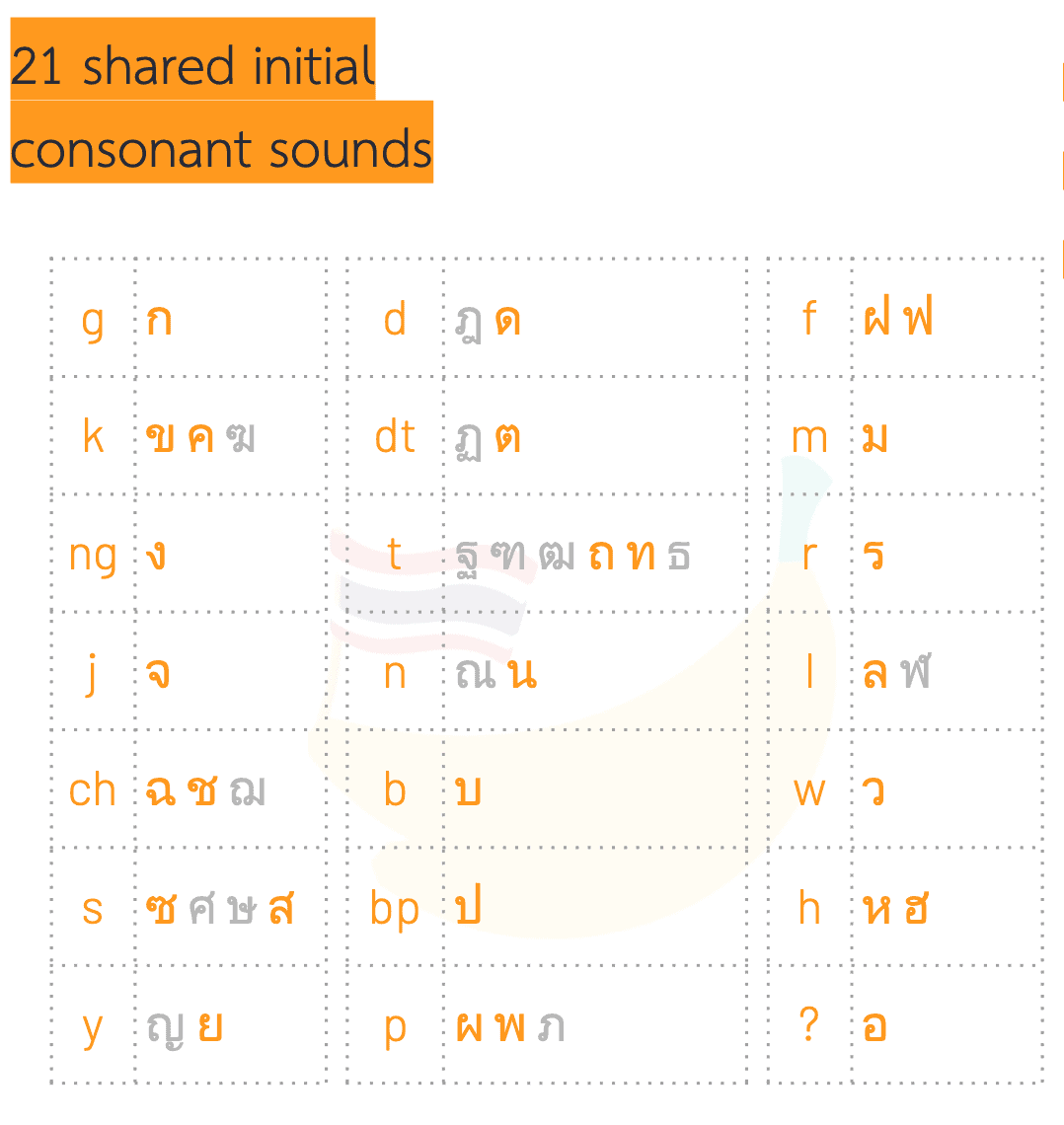
From the picture, the consonants that are highlighted in orange are more commonly used.
2. Big number of vowels as well
Fact: There are in total 32 vowel sounds in Thai but 4 of them are hardly seen which are ฤ ฤา ฦ and ฦา.
Tip: There are only one or a few letters used to form a vowel. So it’s less work to learn too many letters.
And if you observe from the picture below, you will see that many vowel sounds are consists of the same letters, in this case, they are เ- (sara-ee) in blue and -ะ (sara-a) in red.
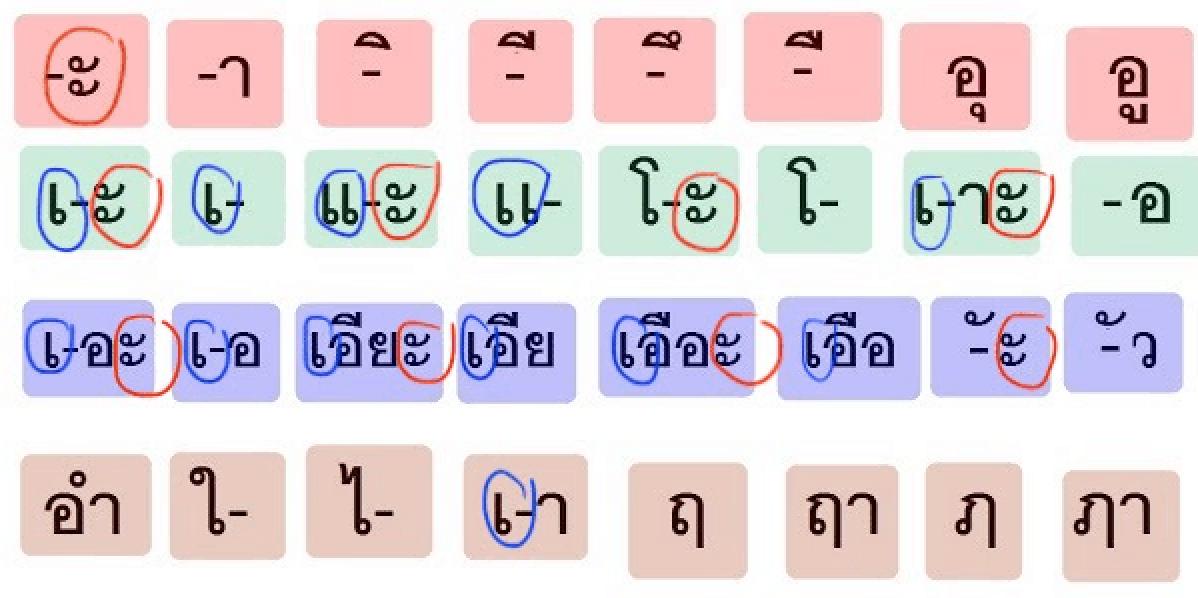
3. Short / Long vowel sounds
Fact: Some of the vowels have short or long sounds. Thai learners think it takes time to memorize that.
Tip: Differentiating vowels with a short sound is quite easy. Either it looks more simple or has the letter -ะ at the end. 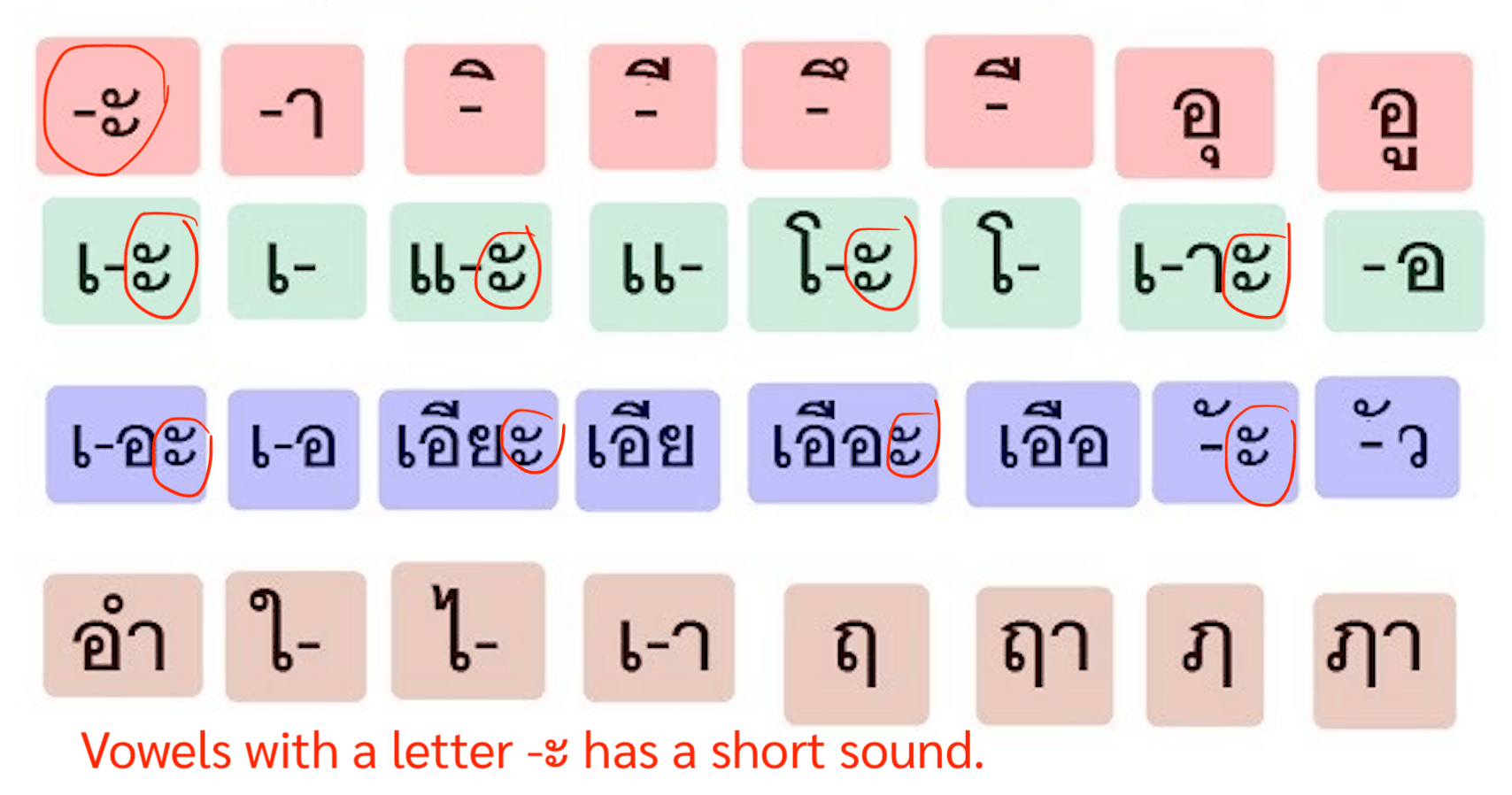
4. There is no space between words or syllables
Fact: That’s right. If you try to read a Thai sentence you will notice that there is no space between words which makes it looks like figuring out where a syllable or word ends can be complicated.
Tip: You will see space only between sentences. To figure out where a syllable ends, you need to learn vowels and their positions.
A vowel letter “always” sticks to an initial consonant. A vowel(s) can be in front of, on top, below, behind, or around.
Knowing vowels and where they are positioned helps you define where a syllable ends.
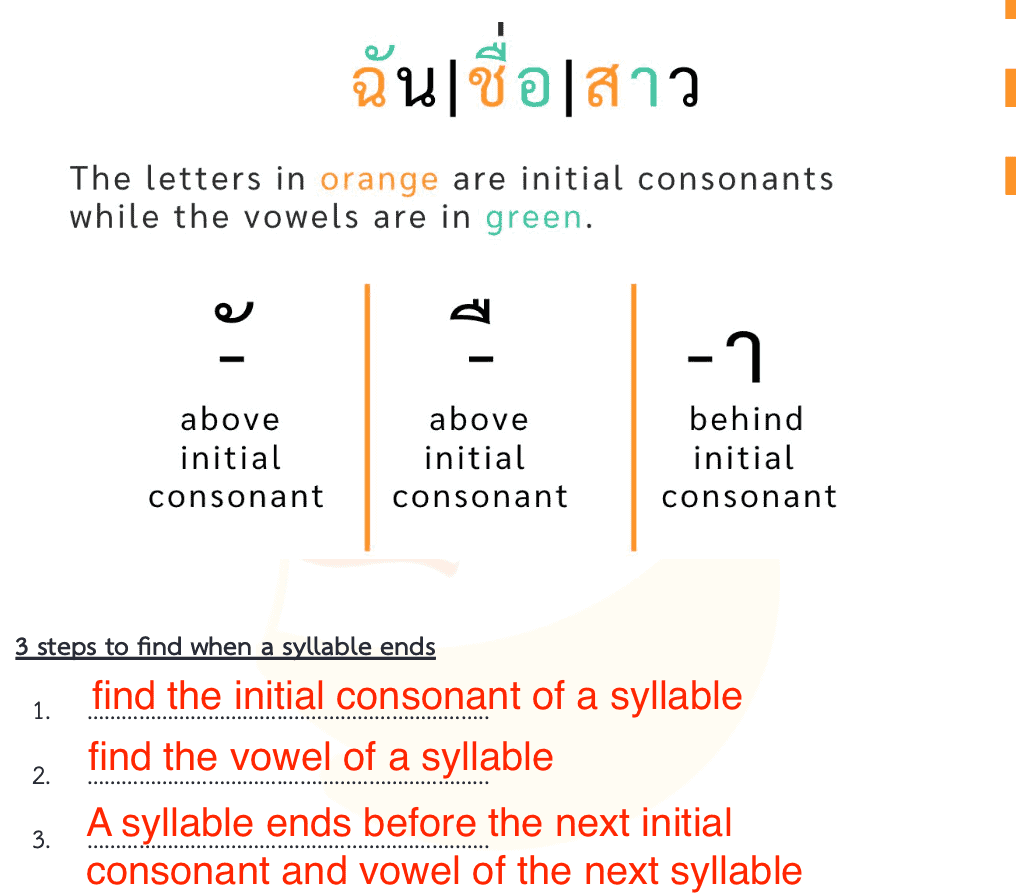
5. The most scary – Thai tones
Fact: There are 5 tones in Thai language. To figure out the tone of a syllable, there are a few things you should know.
– Classes of consonants
– Concept of live and dead syllables
– Vowel and long vowel sounds
– Ending consonant sounds.
– Tone marks
If you know all of the 5 elements I just mentioned then you can use Tone Rule Techniques to figure out tones easily.
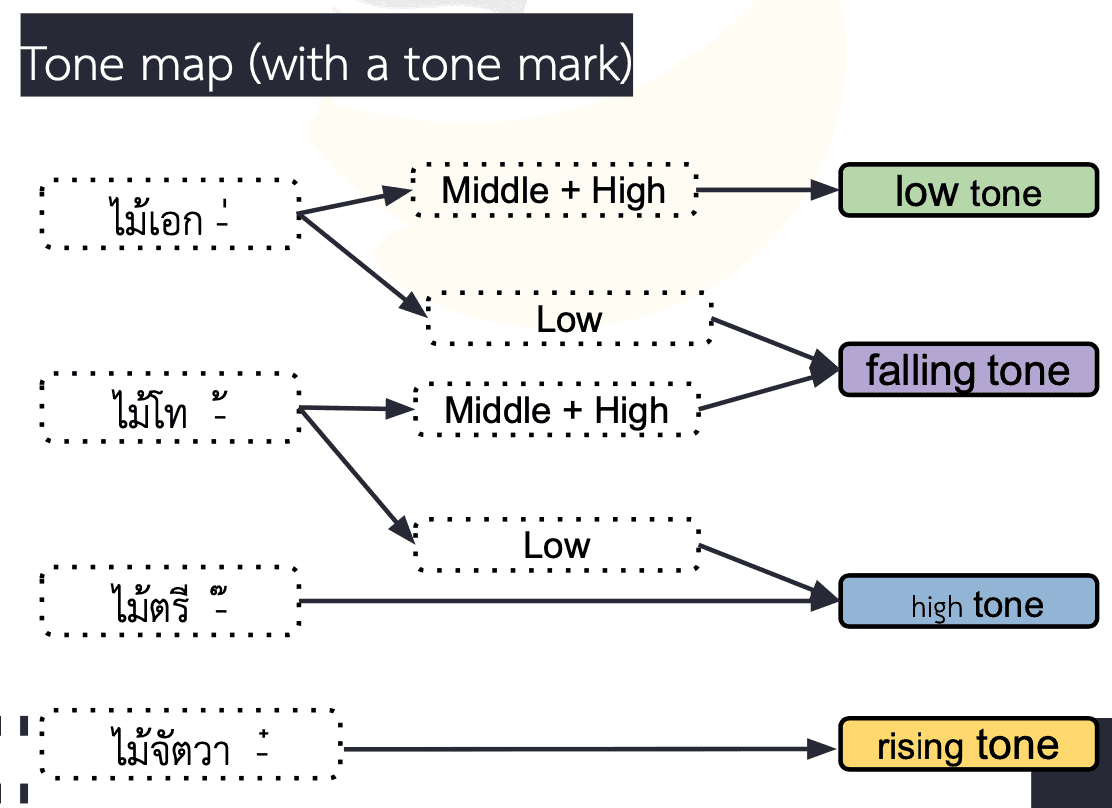
Here is an example of the tools I use to teach my students and help them to figure out tones easily.
For example, the words ม้า = horse
– ม (moor-maa) is a low-class consonant
-้ (mai-too) is a tone mark
Therefore, the tone of the word ม้า is high tone. Easy!
I will explain to you more in the course how to use this Tone Map with plenty of examples in the Ultimate Guide to Thai Reading Course.
Conclusion
Thai script takes effort and time to learn but it can be simple and fun when you’re well-prepared with my tips to overcome the five painful challenges.
Drop your email at info@bananathaischool.com if you’d like to share ideas or request any topic you’d like me to teach you!
Start learning your first Thai consonants
 I have uploaded a few lessons from my reading Thai course (Ultimate Guide to Thai Reading) to help you with Thai script on Youtube “BananaThai”. Here is the introduction to Thai scripts.
I have uploaded a few lessons from my reading Thai course (Ultimate Guide to Thai Reading) to help you with Thai script on Youtube “BananaThai”. Here is the introduction to Thai scripts.



